‘Can I have a ‘P’ please Bob?’ No matter how many times that letter came up on the Blockbusters’ board, there were always a few audience members (and occasionally the contestants, and sometimes the host too) who smiled at that one. And that wasn’t where the comedy of Blockbusters finished; there are a host of legendary silly answers that under-pressure quizzers gave. We’ve all heard the one where the answer should have been ‘organism’…
Then there was the Blockbusters theme tune: ‘da da da da dah da da da, da da da da dah da da da da da da’ (you get the picture). Awful, yes but also catchy. The studio camera would then sweep round to show the audience, as one, enthusiastically joining in a ridiculous child’s party game of a hand clap in time to the music (slapping your thighs twice, clapping your hands together twice, doing some kind of a hand jive, punching yourself round the face…ok, that last one might not be true but it would have been a better ending).
Based on an American concept, the game was played by two teams of school or college students (although owing to the 1980s fashions and hair styles displayed on the show, a lot of them could have easily passed for middle aged). The UK version actually surpassed the US original in popularity, with host Bob Holness’ cheery ‘aren’t I ancient compared to you young things’ line of presenting winning him a following amongst the student community.
The aim of the game was to get across a board of hexagonals, each of which contained a single starting letter of a word. Holness would ask a trivia question such as ‘Which ‘S’ is the day after Friday?’ (the questions were generally a lot harder than this, but you’d be amazed how many people were still capable of getting ones of this complexity wrong) and one of the competitors would buzz in to answer. If they got it right they’d fill the hexagon with their team colour (either blue or white) and try to answer the adjacent hexagon so they could eventually create a line of their colour across the board. The other team would attempt to block that line with one of their own and the first to get from one side to the other would win. The teams always looked slightly uneven; one player on his or her own would go up against a team of two. Slightly unfair you might think, but the single player would work down the board vertically and have to capture only four hexagons, whilst the duo would have to go horizontally, and try to get five.
Appearing on Blockbusters was more about the kudos of winning rather than the prizes themselves; these were occasionally on a par with the ‘Woohoo! You’ve won a kettle!’ type of rewards frequently applauded on Bullseye or 3-2-1. All the contestants would take home a Blockbusters dictionary and sweatshirt (still better than the Blankety Blank chequebook and pen however) and a correct answer on the board would rake in £5 a time. To emphasise that phenomenal sum again, that’s £5 a pop. The award-winning comedian, actor, writer and director Stephen Merchant appeared on Blockbusters in 1997 and won £15. Yes, that much. Not exactly Who Wants to Be a Millionaire? was it?
The team that won the best of three rounds would go on to have a crack at a Gold Run; the same board but the individual letters were replaced with combinations of letters. For example: ‘TRS’ would elicit the clue ‘English rock band formed in 1962.’ If guessed correctly the hexagon would turn gold. (That was The Rolling Stones, but you knew that of course.)
You still got the ‘cash for questions’ for getting answers right during a Gold Run, but completing the board in under 60 seconds would also get you an actual prize. If you were an extreme clever clogs and kept beating your opponent you could get to take part in up to five Gold Runs, with prizes that got marginally better each time. Although that might depend on your definition of ‘better’, due to the fact that the first one normally wasn’t that good at all.
In fact, the first couple of Gold Runs must be the only quizzes in television history where it was better to lose than to win; the overall prizes you got for completing a new board were generally rubbish but if you lost you still got £10 for every hexagon you correctly answered. Not a fortune but certainly more satisfying than having to go on a two day pony trek in the Midlands or learning to hang-glide off of a grey hillside somewhere nondescript. Actually, that is a bit unfair; if you successfully beat your opponents five times in a row then you could try to conquer the final Gold Run, which had the pretty amazing result of a trip abroad. And Holness would shout ‘THAT’S BLOCKBUSTERS!’ at you which was a prize in itself. There really was a damp pony trekking trip once though.
The Bob Holness years (i.e. the best ones) ran from 1983, with a staggering 1,204 episodes broadcast in that time. ITV called time on the show in 1993 and the student population were left thinking they only had Countdown for company until Sky brought it back for five months in 1994, with Holness still in charge. BBC2 also had a crack at reviving it from March to August 1997 with Michael Aspel; a man who was experienced in presenting but for some reason (namely that he wasn’t Bob) he couldn’t bring any life to the show and it was cancelled after 60 episodes. Wrangling it back again, Sky made 100 further programmes with Liza Tarbuck in October 2000. Nobody - not even Liza Tarbuck - remembers this.
Most recently Simon Mayo and the Challenge television channel broadcast 41 new programmes. A better presenter Simon Mayo may be, but Bob Holness was the heart of Blockbusters, and as such could never be bettered. Holness died in January 2012, and it’s a nice thought that perhaps a group of celestial beings greeted him by singing ‘‘da da da da dah da da da, da da da da dah da da da da da da’ and doing a ridiculous hand clap.
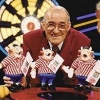

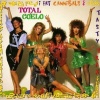
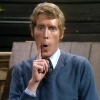
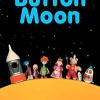
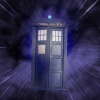
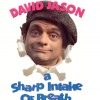
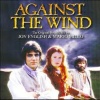
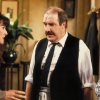

Do You Remember Blockbusters?
Do You Remember Blockbusters?